News
Interview with Linda Jewell, FASLA
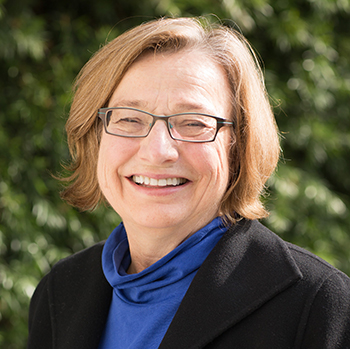 Linda Jewell, FASLA
Linda Jewell, FASLA
How can landscape architecture educators strike a balance between teaching students about the big picture issues -- climate change, urbanization, biodiversity loss -- and the practical aspects of designing and building a project in the real world?
The curriculum has to strike the balance. Education should be project-based, because that is the education we’re best at and what really works for designers. Some of those projects start small and work up in scale, and then others start large and work down in scale.
I remember a project when I was teaching at North Carolina State 35 years ago. Arthur Sullivan, who had taught at the University of Pennsylvania and was a scientist, ran a wonderful studio where he asked students to analyze a suburban house, an urban house, and a rural house. He asked them to analyze every bit of water and trash -- to discover these homes' impact on the world. What would have to happen for them to achieve zero resource use? So, it was a small focus, but it looked out.
Whenever students are doing something small -- like working out their water system -- they’ve got to know where every drop of water ends up. They have to have a realistic view rather than just, “Oh, this is what they did in Portland, and so we’re going to do it here.”
The issue is learning to look at the specific situation and then back out and look at the impact of the small on the large. At the same time, you can look at the impact of large-planning decisions on how small projects are built.
How does landscape architecture education incorporate science, technology, engineering, and math (STEM) principles, which are viewed as so critical in today’s job market? How is education focused on STEM strengthened by design thinking?
It’s fascinating how in the last decade science and technology curricula have been looking to design schools for design thinking. There’s hardly a well-known engineering, computer technology, or environmental science department that isn’t in some way teaching design thinking now.
What they’re after is out of the box thinking. They are trying to help their students not only follow linear systems, which is the tradition in engineering, but to break out and bite the blue apple. I know one faculty member used to say: "Take that risk, try something that has not yet been prescribed.”
Landscape architects are deeply connected to the environmental sciences. We have been working with environmental scientists through the entire course of the profession. It has become more precise because regulatory requirements have become more complicated. There is still a lot of our population that is aware that when you build a project, it will have impact on the local bay or river, the ocean, and air quality. Because of that awareness, we have clients, particularly government agencies, that want to understand the impact of making a particular decision.
For the most part, all of the good, strong, creative design firms in the country rely on specialists -- sometimes landscape architects who have also studied some aspect of ecology or someone who started in ecology and maybe studied landscape architecture or environmental planning. Nobody does anything by themselves any more; there are very complex teams.
As educators, part of what we have to do is to help people find their place. We help them understand the breadth of possibilities and the complexities. Everybody -- even if they are the most technical, nerdy kind of person doing very specific things -- wants to reach outside the box to solve a problem.
We must recognize each site is unique and you have to solve a situation for a particular site. I’m tired of seeing Portland green infrastructure details appearing in projects all over the country. Every time I go to see a student project somewhere everybody’s thrown in the images of Portland. There probably is a better solution someplace else. The ability to craft things to the unique situation is really important.
How does landscape architecture education need to evolve to meet the needs of increasingly diverse student body and a diverse society?
Undergraduate and graduate landscape architects need to recognize that other people, particularly those in other cultures, see the world differently than they do. People have different value systems. Just because you think it’s wonderful to have a coffee shop on the edge of your project doesn’t mean everyone does.
Now, I think most educators think, “Well, then you do community projects.” But there are other ways as well. Classmates can learn from one another.
I taught the large architecture and landscape architecture urban studies courses with 140 students at University of California at Berkeley. These young freshman are trying to figure out what they want to do in the design world. And talk about diversity -- it is Berkeley, where white males are in a minority, and there's everybody -- Southeast Asians, lots of Latino students, African-American students.
They learn from one another if you set up a situation where they’re working in teams. I used to do an exercise where one student makes a collage. If they were going to design a park, they would make a collage of the images of their ideal park. Then we would draw names and someone else would design for this other person’s park. Well, if you grew up in the valley of California of Latino background, your images were quite different from the preppy from New England. I did this years ago at NC State. There, I had a guy from West Texas and a woman from Massachusetts. All of her spaces were enclosed in green, and all of his were vast and open. They had trouble making the transition to the other's spatial value system.
Community projects are one way to do it, but they’re very complicated, and it takes a sophisticated teacher to do them. They’re best done after students have some experience and build up some skills because there’s often the danger of both disappointing students and the community. They can be excellent experiences, but an experience in which students realize not everybody sees the landscape exactly the way they do.
Brad McKee, editor of Landscape Architecture Magazine, has called you "sublimely practical." Do you believe the devil’s in the details? How do you teach students to care about the details when they are making something?
Materials are design opportunities. They are the opportunities where we can be the most creative.
Many of our design leaders just do an extraordinary job now. But they didn’t 40 years ago. When I was a student at the University of Pennsylvania 40 years ago, it was asphalt with wood trim and brick-banded concrete and that was pretty much what we learned. Poured-in-place concrete. We’ve broadened out quite a bit.
The best way to teach and for students to learn to be creative is through observation. I taught a field trip course at Berkeley. All we would do is go to projects where my colleagues in practice in the Bay Area were very generous to show them projects under constructions, talk about the choice of materials, source of the materials, the problems in installing them, how they worked.
The students would also do a post-material construction evaluation -- go to projects and make their own observations, take notes, keep a detail notebook. They would go out with some kind of measuring device. I have them use notebooks with grid paper. They would have to draw-to-scale sketch-- not hard line, just draw over a grided scale, a detail of a bike rack or curb edge. They would keep that notebook throughout the semester.
What I was trying to do is give them a new pair of eyes. It’s been very rewarding when I have a student who years later says, “Oh, I still do that. I still go out and look, measure, and try to understand." We can’t possibly teach in school what you need to know about materials and detailing. What we can do is get people excited about them, make them curious, and give them a new pair of eyes.
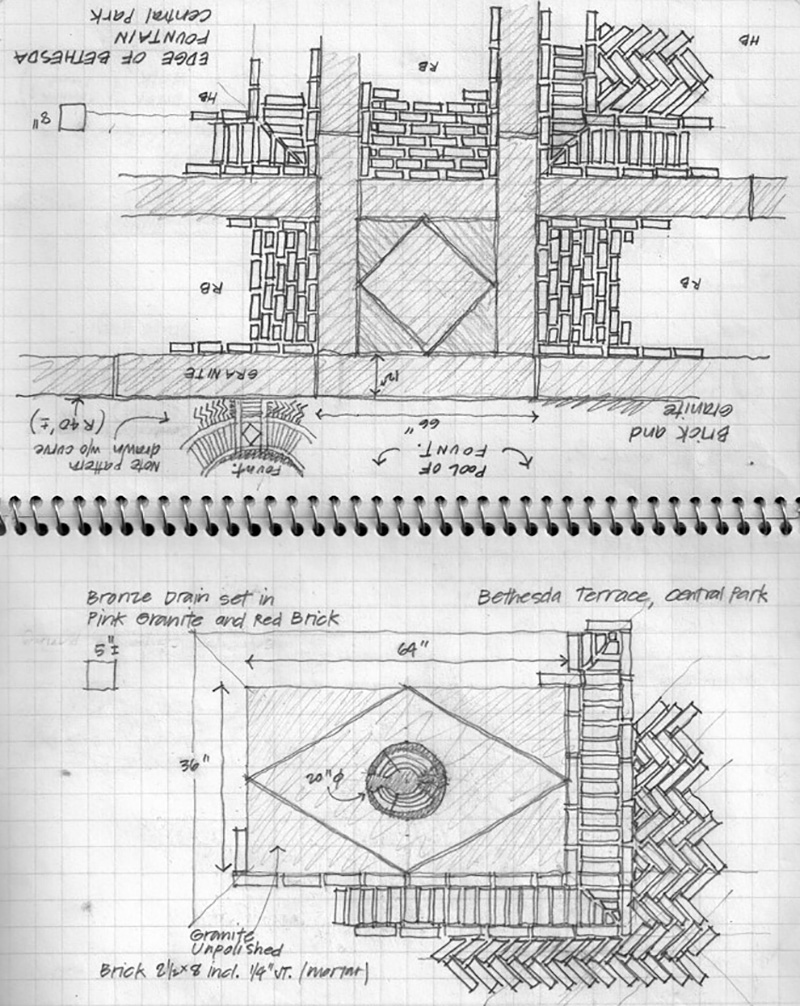 Student Sketchbooks / Linda Jewell
Student Sketchbooks / Linda Jewell
The other thing I do in the field trip course is go to offsite manufacturing, so students become familiar with how things are fabricated. The digital age has given us so many different ways to produce materials, with all of the laser cutting and digitally-run equipment that are creates in shops and then installed in the field. These trips also armed students with building techniques they then used in my design-build class.
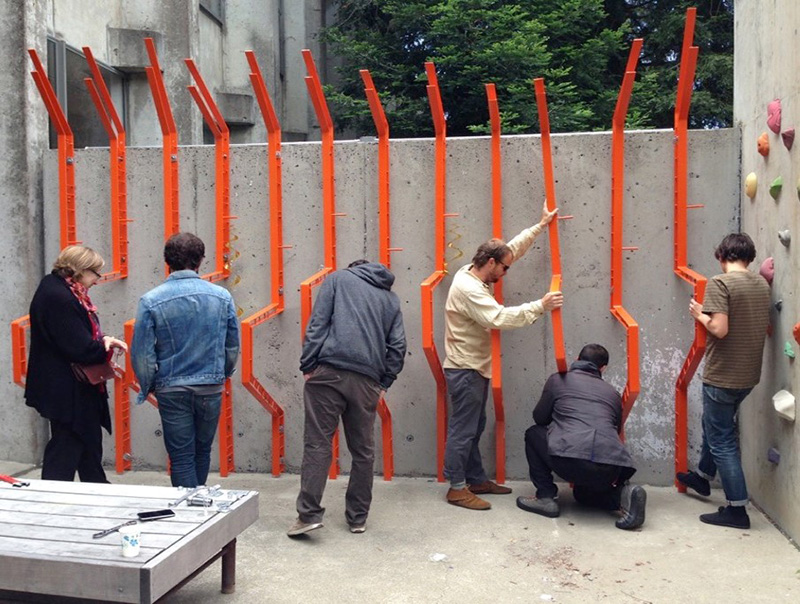 Bike Racks for Wurster; College of Environmental Design, University of California at Berkeley / Linda Jewell
Bike Racks for Wurster; College of Environmental Design, University of California at Berkeley / Linda Jewell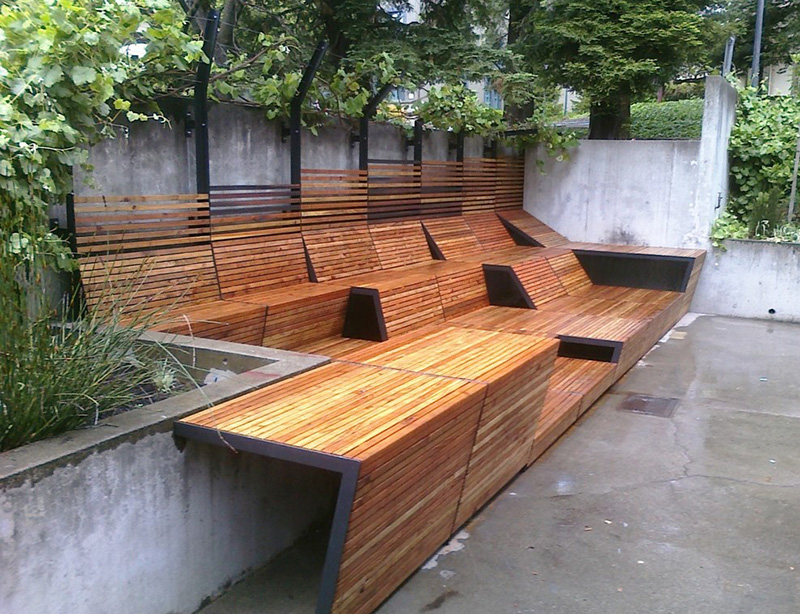 ASLA 2011 Student Collaboration Honor Award. Wurstershire Sauce, University of California at Berkeley / Yes Duffy
ASLA 2011 Student Collaboration Honor Award. Wurstershire Sauce, University of California at Berkeley / Yes Duffy
What’s the worst construction errors you’ve ever seen? And the worst mistake in the application of materials?
I’d be hard pressed to pick one project. I did a lot of work for speculative developers in the D.C. area who were not prone to spend a lot of money. They had some very basic ways of building: poured-in-place concrete, three-inch pipe rail. You’ve seen some of the work over at Crystal City, Arlington, Virginia. They built in pre-cast concrete.
What we tried to do on the Crystal City Water Park is use the materials as best we could so the developers were comfortable using and maintaining.
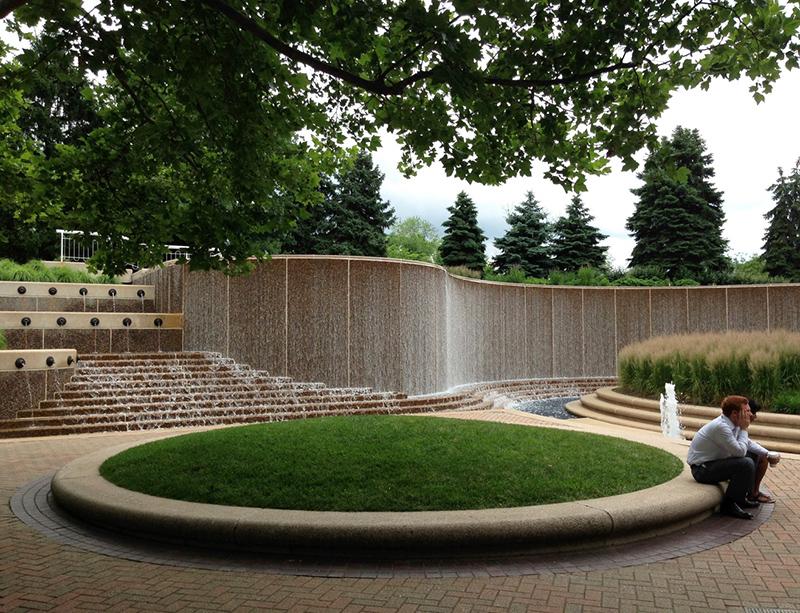 Crystal City Water Park / Linda Jewell
Crystal City Water Park / Linda Jewell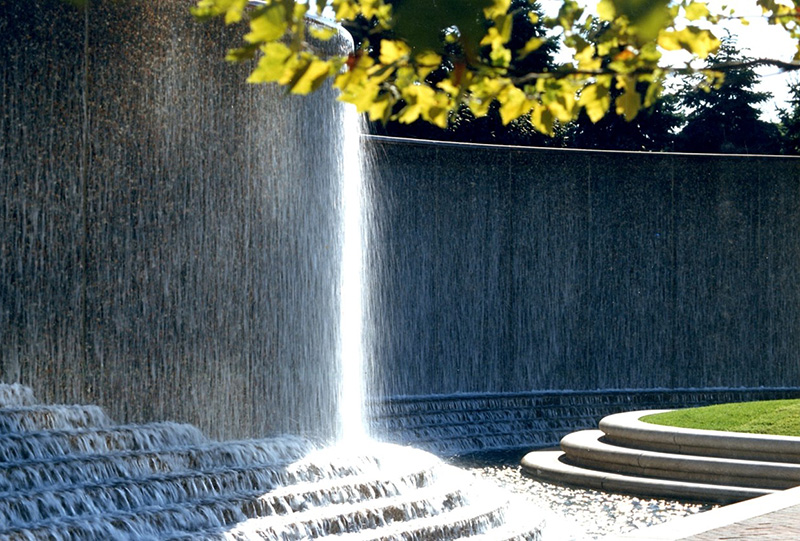 Crystal City Water Park / Anton Grassl
Crystal City Water Park / Anton Grassl
Some of the biggest mistakes are made when your budget and your ideas about what can be built are misaligned. One of the construction field trips we used to go on visited Ron Herman’s very high-end residential projects. They were wonderful to see, because Ron would work with granite that had been cut so precisely to a quarter of an inch. Students could understand the tolerances that he was able to work with, because he had the money. Then we’d go to a public bid project in Berkeley where they were doing poured-in-place concrete. There, you shouldn’t have the expectation that you were going to have the kind of precision that Ron could have.
You learn and observe, but you’re not going to do that while you’re in school. All you can do is set people up to ask: what kind of craftsmanship can I get in this particular situation? Who are the local craftsman? How can I bring them in?
Maybe landscape architects and architects are not very adventuresome about finding the local craftsmen and getting some real bargains out of them in terms of crafted benches, detailing in the landscape. But others are. Many of our most creative landscape architects -- even with modest budgets -- do this.
You gotta craft to your situation. That’s where I see the worst mistakes: an expectation that every line, every joint is going to line up. If it’s going to the low bidder in a public project, it’s probably not going to line up.
Should all landscape architecture educators practice and all practitioners teach?
No, but some of them should on both ends. Every landscape architecture faculty should include people that have practiced or are actively practicing. That doesn’t mean bringing in the local practitioner to teach a materials class. We need a number of people on the full-time tenure-track faculty who have a role in running the department and developing the curriculum with experience in practice.
Departments also need people who strictly do research on speculative, creative projects like Alan Berger at MIT, or James Corner, ASLA, at the University of Pennsylvania, when he started out. If you have that range of people, then they begin to start conversations with each other.
It takes work on the part of faculty to integrate practitioners who are not being paid. Many of them are very generous, but they really have a time squeeze. I mentioned the construction field trip course. I couldn’t do that without participation of practitioners. But I had to cultivate that relationship. Full-time faculty have to cultivate relationships with local practitioners.
What was it like to be the first woman to run the landscape architecture department at Harvard Graduate School of Design? Did you feel supported or like you had to overcome sexism?
When I studied architecture, I was the only woman in my class. I did not have a woman colleague until I went to the University of Pennsylvania to study landscape architecture. Not only did I have a women student colleagues, but Carol Franklin, FASLA, was one of my instructors. That was a whole new world.
I have my #MeToo stories, believe me, because I was the only woman. I was pretty accustomed to dealing with those kinds of situations.
My colleagues on the landscape architecture department were wonderful. I was the only woman. Well, Anne Whiston Spirn, FASLA, was there when I first went, but then she left and then there was just me and then I hired Elizabeth Meyer, FASLA, who became chair of the landscape architecture department and later dean of the school of architecture at the University of Virginia. I have liked having women around.
It was a little more difficult with some of the architecture faculty and administration who put me in a girl box. The girl box is helper-mate. Good administrator; take care of the problem. I’m not saying that my landscape architecture colleagues were like that. Michael Van Valkenburgh, FASLA; Carl Steinitz, Laurie Olin, FASLA; and Peter Walker, FASLA were all terrific to me. They appreciated that I took care of the administrative crap and tried to do it well, but I never felt that they put me in a box.
The first year I started teaching at Harvard, Carl warned me that I would have nearly 90-year-old Norman Newton teaching in the first semester studio with me, even though he’d been retired for 30 years. Norman was known for dismissing women. He was often criticized that his history book didn’t even cover Beatrix Farrand in any comprehensive way. That just kind made me more determined to reach out and develop a bond with him, which I did through an exhibition of his work on construction details. It was also good for me, because it sent me in a whole new direction of how to teach construction. That was the inspiration for me teaching students to go out, observe, and measure existing details.
There are more high-profile women landscape architects and educators than ever before. How has it changed for women practitioners and educators over the past few decades?
It has been terrific because we support each other. With the commissions I sit on, I have been in the position to advocate for women's firms to be hired. It was no compromise on my part, because we’re talking about Gustafson Guthrie Nichol (GGN) and firms like that. But I've found you still have to advocate. The more of us out there, the more we can advocate for each other. There's now a significant old girls’ network.
There are still obstacles. I know women-owned firms where the heads of the firms, even some of our most talented people, struggle to get the interview for a project. The obstacles are more subtle and much less than they used to be.
I want to give thanks to people like Thaisa Way, FASLA, who has writing about the many women from the 1910s-1903 who were doing significant work and were never talked about. At Landscape Architecture Magazine, from Grady Clay up to the current editor Brad McKee, there has been a real effort to make sure women aren't shunted to the side. Grady Clay was very good when he put Martha Schwartz’s Bagel Garden on the cover of the magazine. When he hired me as construction editor when I was in my 20s -- rather than some of the other people who applied -- he was a rebel.
Linda Jewell, FASLA, is the recipient of the 2018 ASLA Medal, the 2008 Jot D. Carpenter Teaching Medal, and the 2007 Bradford Williams Medal. Jewell is professor emerita of landscape architecture at the University of California at Berkeley, where she was chair from 2006-2010 and partner in the firm Freeman & Jewell. She was construction editor at Landscape Architecture Magazine in the 80s, and co-author of Women in Landscape Architecture: Essays on History and Practice (McFarland, 2011). She is working on a new book on outdoor event spaces.
Interview was conducted by Jared Green at the ASLA 2018 Annual Meeting & EXPO in Philadelphia.